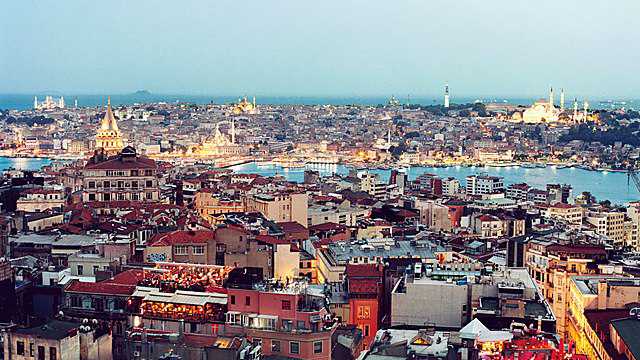| by Taylan Bilgiç
Diminishing global risk appetite bodes ill for developing nations, which, in varying degrees, are dependent on foreign capital inflows to stay afloat. Turkey, like its peers, is also worried foreign investment might dry up, but the latest data and research suggest that might be the least of our problems. The Organization of Economic Cooperation and Development, or OECD, says the “outlook for foreign direct investment, or FDI, has darkened,” in its latest “Investment News” newsletter. Based on current trends, inflows will be down 13 percent and outflows by 6 percent in member countries. There are two reasons for this decline. First, the OECD says, “the freezing of credit markets … have forced companies to rely largely on cash reserves to finance investment. “Many firms are facing severe internal liquidity constraints,” says the Paris-based organization. “Second, with global growth forecast for 2009 at 2.2 percent … the need for companies to invest in new capacity is considerably reduced.” The data suggests Turkey might have much more to fear than just dried-up foreign inflows. In 1999, FDI inflows to developing countries constituted 87 percent of all foreign capital flows, World Bank data show. In contrast, portfolio flows – indirect investment that is relatively quicker to get in and out of countries – accounted for 5 percent. Total inflows that year stood at $204 billion, which means FDI flows stood at $177.5 billion, while portfolio flows were a mere $10.2 billion. Upturned balance As the global crisis unfolds, most of this money is moving back, largely seeking sanctuary in the greenback or U.S. Treasury bonds. But, according to Royal Bank of Scotland estimates – outlined in a note to investors by RBS analyst Timothy Ash – Turkey still has “upwards of $70 billion in foreign portfolio funds invested, which could potentially add to the external financing gap if the situation deteriorates quickly.” And the situation does not seem bright. In the last three months to November, total foreign capital outflows from Turkey reached $16.5 billion, according to estimates by Fortis, outlined in the “Glokal Stratejist” newsletter. That amount includes $6.7 billion in “traditional investment instruments” such as bonds, equities or deposits, while short-term, “hot money” positions were unwound to the amount of $9.8 billion. The total amount of portfolio outflows stood at $5.4 billion just in October, and Fortis says this is “the biggest amount for one month in history.” To put it simply, the question for Turkey is not how much foreign capital it will receive over the next period, but how much foreign capital it will be able to hold. The reluctance of the Central Bank to reduce its overnight borrowing rate – at 16.75 percent – or the silent devaluation of the national currency, seem all tied to this central problem. Thus, ironically, the billions of dollars Turkey has managed to attract in the past six years have become time-bombs now. The possibility of a sudden outflow is why foreign analysts put he figure for Turkey’s external financing need at as high as $120 billion. In a worst-case scenario, such an amount may be barely enough to offset the outflow. In light of this, the ‘negative outlook’ given by S&P to Turkey last week might be a first step in “pricing the Turkish risk” for foreigners. Thus, the pressure on the government to make an extensive deal with the International Monetary Fund increases. |
| 20 Kasım 2008 |
The ticking outflow time bomb for Turkey
